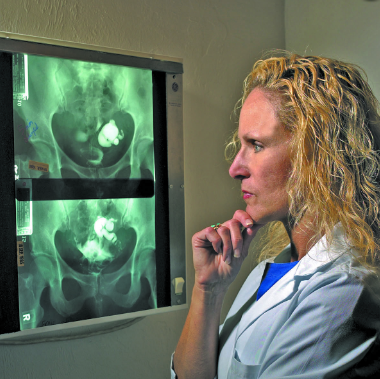Hysterosalpingography (HSG) in Romania
Search and Compare the Best Clinics and Doctors at the Lowest Prices for Hysterosalpingography (HSG) in Romania

Find the best clinics for Hysterosalpingography (HSG) in Romania
No pricing info available
Tunisia offers the best prices Worldwide
Price: $ 161
From 8 verified reviews
Nico, 17 September 2020
Nu vom uita niciodata numele Dnei Dr Codreanu Dorina. Ii datoram recunostina pentru cele doua minuni pe care le avem acasa. Fara dansa nu am fi fost niciodata parinti. Un medic exceptional, empatica, foarte bine pregatita...un profesionist! Jos palaria pentru Doamna Dr!
- Home
- Romania
WHY US?
At Medijump, we're making medical easy. You can search, compare, discuss, and book your medical all in one place. We open the door to the best medical providers worldwide, saving you time and energy along the way, and it's all for FREE, no hidden fees, and no price markups guaranteed. So what are you waiting for?

Free

Best Price

Widest Selection

Risk-Free
What you need to know about Hysterosalpingography (HSG) in Romania

Hysterosalpingography (HSG) is a procedure that uses a special form of X-ray to look at the fallopian tubes and uterus. It is a noninvasive medical test that is often used to find out why you are having difficulty conceiving. The doctor will check if the fallopian tubes are fully or partially blocked and if the inside of the uterus is normal.
Doctors also recommend HSG to examine repeated miscarriages that may be caused by congenital or acquired uterine problems, such as adhesions, endometrial (uterine) polyps, uterine fibroids, congenital problems (uterine anomalies), tumors. In addition, HSG can check the effects of tubal surgery, including:
-
Blockage of the fallopian tubes caused by scarring or infection
-
Reopening of the fallopian tubes after sterilization or a blockage caused by a disease
-
Closing of the fallopian tubes after sterilization procedures.
What does a Hysterosalpingography (HSG) Procedure Involve?
During HSG, you will have to lie on your back with your knees bent on a table under an X-ray imager called a fluoroscope. Then, a device called a speculum will be inserted into your vagina. This device holds the walls of the vagina apart, keeping it open and allowing your doctor to view the cervix. The cervix is then cleaned. In most cases, no sedation is used during the procedure, but your doctor may inject local anesthesia to the end of the cervix to numb the area. You may feel a slight pinch as this is done.
Next, a contrast medium will be placed in the uterus and fallopian tubes. A contrast medium is a fluid containing a dye that can show up the structures of your body on an X-ray screen. The dye can outline the inner size and shape of your uterus and fallopian tubes. Your doctor can also see how the dye moves through your body structures.
To place the contrast, the cervix is grasped with a special device to hold it steady. Then, an instrument called a cannula is inserted into the cervix. Through the cannula, your doctor gently fills your uterus with the contrast. After that, your doctor will remove the speculum, and as the contrast medium fills your uterus and tubes, images are made with the fluoroscope X-ray. You may be asked to move around so that your doctor can get side views. It is normal to feel cramping during this part.
Finally, once the images are taken, your doctor will remove the cannula.
How Long Should I Stay in Romania for a Hysterosalpingography (HSG) Procedure?
HSG is an outpatient procedure, so you should be able to leave the hospital on the same day. In most cases, you can get the test results on the same day and discuss the results with your doctor right away, so you do not have to stay in Romania any longer than you wish to. However, if the results are not immediately ready, plan to stay in the country for several days. Your doctor should give you the details.
What's the Recovery Time for Hysterosalpingography (HSG) Procedures in Romania?
You can resume your normal activities, including work, immediately after HSG. However, you should refrain from sexual intercourse for 2 to 3 days.
What sort of Aftercare is Required for Hysterosalpingography (HSG) Procedures in Romania?
It is also important to note that you might have some vaginal spotting, cramps, stomach discomfort, and dizziness for a few days following the procedure. You can use pads for the vaginal discharge, but make sure to avoid using a tampon. Your doctor may give you antibiotics to prevent an infection and pain medicine to help you with any cramps and discomfort. If your doctor does not prescribe you pain medicine, you can take over-the-counter pain relievers.
What's the Success Rate of Hysterosalpingography (HSG) Procedures in Romania?
HSG is a very safe procedure with high success rates. However, there are some complications that the procedure carries and they only occur with 1% of patients. These complications include infection, radiation exposure, fainting, allergic reaction to the contrast material, and spotting. Injury to your uterus or pelvic injury is possible as well.
The procedure is generally considered as effective and accurate most of the time. However, a small study revealed a 35% incident of false negatives. This means that the results showed a normal uterine shape, but other tests showed abnormalities. Also, 15% of women who undergo this procedure have a false-positive, meaning the results showed abnormalities when it is actually normal.
Are there Alternatives to Hysterosalpingography (HSG) Procedures in Romania?
The following procedures can give your doctor similar information as HSG:
-
Hysteroscopy can provide a detailed view of the inside of your uterus, but it cannot give information about your fallopian tubes.
-
Laparoscopy can show if the fallopian tubes are open.
Sonohysterography can show the insides of your uterus. However, as with hysteroscopy, it cannot show whether your fallopian tubes are blocked.
What Should You Expect Before and After the Procedure
Before HSG, you may have trouble conceiving or had two or more miscarriages, or you just underwent some tubal sterilization procedures. After the procedure, your doctor should be able to find any abnormalities that are causing the problem. The results will be able to help you and your doctor creates a treatment plan. If you have HSG because you have some tubal sterilization procedures before, the results will be able to tell if your fallopian tubes have been completely blocked.
Whilst the information presented here has been accurately sourced and verified by a medical professional for its accuracy, it is still advised to consult with your doctor before pursuing a medical treatment at one of the listed medical providers
No Time?
Tell us what you're looking for and we'll reachout to the top clinics all at once
Enquire Now

Popular Procedures in Romania
Prices Start From $530

Prices Start From $0

Prices Start From $242

Prices Start From $683

Recommended Medical Centers in Romania for Hysterosalpingography (HSG)

- Interpreter services
- Translation service
- Religious facilities
- Medical records transfer
- Medical travel insurance
- Health insurance coordination
- TV in the room
- Safe in the room
- Phone in the room
- Private rooms for patients available

- Interpreter services
- Translation service
- Religious facilities
- Medical records transfer
- Medical travel insurance
- Health insurance coordination
- TV in the room
- Safe in the room
- Phone in the room
- Private rooms for patients available

- Interpreter services
- Translation service
- Religious facilities
- Medical records transfer
- Medical travel insurance
- Health insurance coordination
- TV in the room
- Safe in the room
- Phone in the room
- Private rooms for patients available

- Interpreter services
- Translation service
- Religious facilities
- Medical records transfer
- Medical travel insurance
- Health insurance coordination
- TV in the room
- Safe in the room
- Phone in the room
- Private rooms for patients available

- Interpreter services
- Translation service
- Religious facilities
- Medical records transfer
- Medical travel insurance
- Health insurance coordination
- TV in the room
- Safe in the room
- Phone in the room
- Private rooms for patients available

- Interpreter services
- Translation service
- Religious facilities
- Medical records transfer
- Medical travel insurance
- Health insurance coordination
- TV in the room
- Safe in the room
- Phone in the room
- Private rooms for patients available

- Interpreter services
- Translation service
- Religious facilities
- Medical records transfer
- Medical travel insurance
- Health insurance coordination
- TV in the room
- Safe in the room
- Phone in the room
- Private rooms for patients available

- Interpreter services
- Translation service
- Religious facilities
- Medical records transfer
- Medical travel insurance
- Health insurance coordination
- TV in the room
- Safe in the room
- Phone in the room
- Private rooms for patients available

- Interpreter services
- Translation service
- Religious facilities
- Medical records transfer
- Medical travel insurance
- Health insurance coordination
- TV in the room
- Safe in the room
- Phone in the room
- Private rooms for patients available

- Interpreter services
- Translation service
- Religious facilities
- Medical records transfer
- Medical travel insurance
- Health insurance coordination
- TV in the room
- Safe in the room
- Phone in the room
- Private rooms for patients available
Hysterosalpingography (HSG) in and around Romania
Introduction
Situated at the crossroads of Central, Eastern, and Southeastern Europe, Romania is a country of contrasts. From its medieval towns and castles, nature, and wildlife, to its rich cultural heritage and amazing food, this country continues to amaze its visitors. In recent years, Romania has become a flourishing medical tourism destination. Due to its low prices, well-trained medical staff, highly skilled doctors, and amazing medical centers, the country attracts an ever-increasing number of international medical tourists. Dental work is the number one reason medical tourists travel to this country, closely followed by cosmetic surgeries. Most medical tourists come from other European countries, such as the UK, Germany, other Western European countries, and the US.
Popular Cities and Regions in Romania
Almost every city in Romania has its fair share of amazing tourist attractions and skilled specialists. The most popular one is the capital of the country, Bucharest. This dynamic city boasts excellent museums, trendy cafes, and beautiful parks. Tourists usually flock to the Palace of Parliament, the Statue of Emperor Trajan, Cişmigiu Garden, the Romanian Athenaeum, and the Museum of the Romanian Peasant. Besides Bucharest, one of the most popular cities in the country is Brasov which is located in Transylvania; tourists usually come to this city as their base for trips to “Dracula’s castle.” The city is filled with charming medieval streets, great hiking spots, and a beautiful historic center. The second-largest city in Romania, Cluj-Napoca, is also famous for its bohemian cafes, amazing medical centers, and music festivals.
Transport in Romania
Henri Coandă International Airport is the busiest airport in Romania. It serves flights to various major cities in Europe, Africa, and the Middle East. Getting around Romania with domestic flights is fast, but can be expensive. The most common way to travel is by bus and maxi taxi (minibus), which reaches even the smallest towns.
Visas in Romania
While Romania is not yet part of the Schengen Area, the country’s visa policy is based on the Schengen acquis. Therefore, citizens of 62 countries, including the US and Australia, can visit and stay in the country for up to 90 days without a visa. Citizens of other countries will need a visa to enter. Those who already have a Schengen visa may enter the country.
Weather in Romania
Spring from March to May has fairly mild temperatures and pleasant weather. Summer, starting from June to August, is usually dry, sunny and sweltering. Autumn comes in September and ends in November. It brings enjoyable temperatures, but it is also the rainy season in the country. Winter, from December to February, can get quite cold and harsh with frequent snowfall.
Additional Info
- Local Currency: The currency is the Romanian leu (RON). 1 USD is approx. 4.7 RON.
- Money & Payments: ATMs can be found in major cities and smaller towns. Credit cards are widely accepted in restaurants and hotels. Tipping is expected in restaurants, hotels, etc.
- Local Language: There are several spoken languages in Romania. However, Romanian is the most spoken language. English is also spoken by around 31% of the population.
- Local Culture and Religion: Romania is a secular state with no state religion. However, Christianity is the biggest religion. Islam, Paganism, and other religions are also present.
- Public Holidays: New Year’s Day, Descent of the Holy Spirit, National Day, and Christmas Day are some of the most celebrated public holidays.
Popular Searches
- Plastic Surgery in Thailand
- Dental Implants in Thailand
- Hair Transplant in Thailand
- Breast Augmentation Thailand
- Gastric Sleeve in Thailand
- Gender Reassignment Surgery in Thailand
- Laser Hair Removal in Bangkok
- Botox in Bangkok
- Dermatology in Bangkok
- Breast Augmentation in Bangkok
- Coolsculpting in Bangkok
- Veneers in Turkey
- Hair Transplant in Turkey
- Rhinoplasty in Turkey
- Stem Cell Therapy in Mexico
- Rhinoplasty in Mexico
- Liposuction in Mexico
- Coolsculpting in Tijuana
- Rhinoplasty in Korea
- Scar Removal in Korea
- Gastric Sleeve in Turkey
- Bone Marrow Transplant in India
- Invisalign in Malaysia
- Plastic Surgery in the Dominican Republic
- Tummy Tuck in the Dominican Republic
- Plastic and Cosmetic Surgery in Poland
- Rhinoplasty in Poland
- Hair Implant in Poland
- Dental Implants in Poland
- IVF in Turkey
